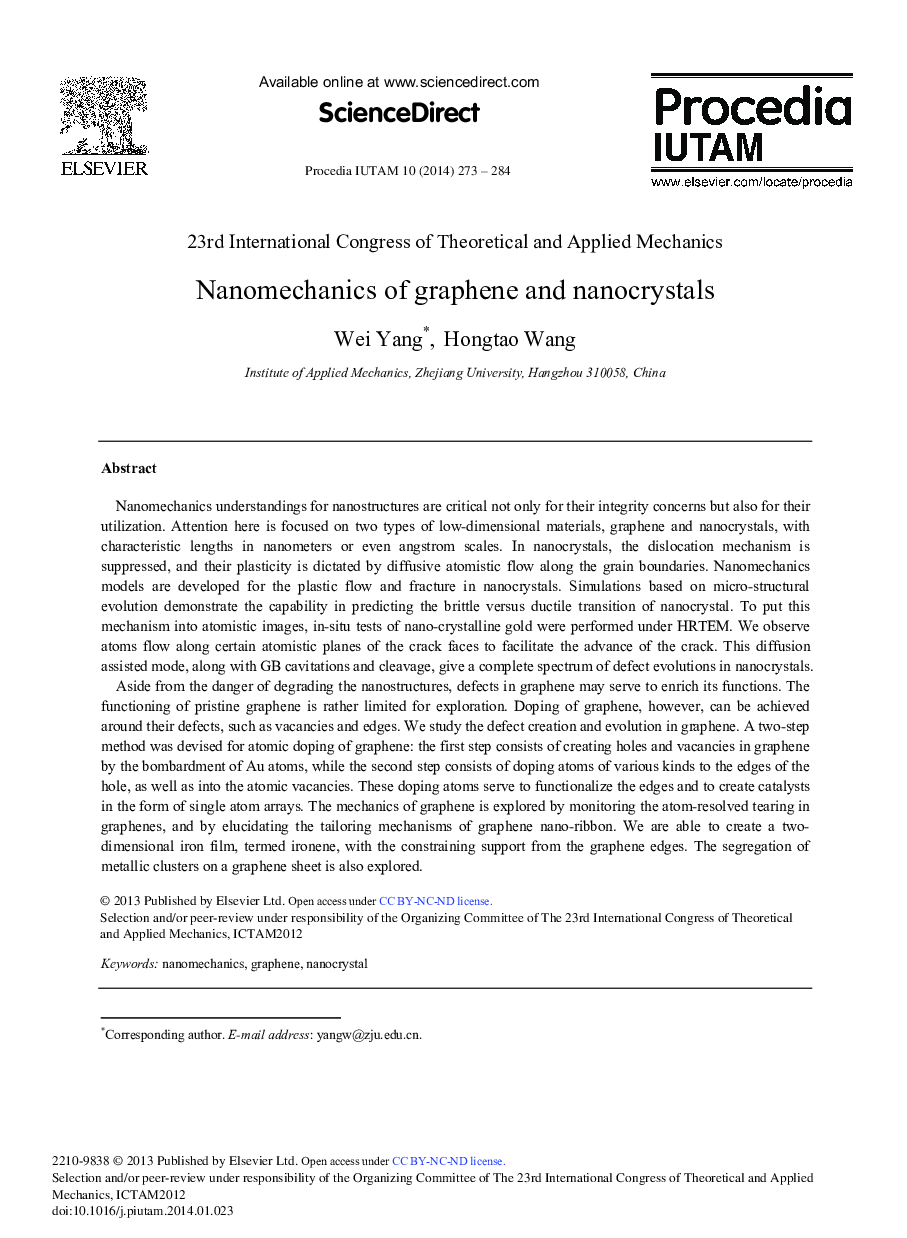| کد مقاله | کد نشریه | سال انتشار | مقاله انگلیسی | نسخه تمام متن |
|---|---|---|---|---|
| 864962 | 1470839 | 2014 | 12 صفحه PDF | دانلود رایگان |
Nanomechanics understandings for nanostructures are critical not only for their integrity concerns but also for their utilization. Attention here is focused on two types of low-dimensional materials, graphene and nanocrystals, with characteristic lengths in nanometers or even angstrom scales. In nanocrystals, the dislocation mechanism is suppressed, and their plasticity is dictated by diffusive atomistic flow along the grain boundaries. Nanomechanics models are developed for the plastic flow and fracture in nanocrystals. Simulations based on micro-structural evolution demonstrate the capability in predicting the brittle versus ductile transition of nanocrystal. To put this mechanism into atomistic images, in-situ tests of nano-crystalline gold were performed under HRTEM. We observe atoms flow along certain atomistic planes of the crack faces to facilitate the advance of the crack. This diffusion assisted mode, along with GB cavitations and cleavage, give a complete spectrum of defect evolutions in nanocrystals. Aside from the danger of degrading the nanostructures, defects in graphene may serve to enrich its functions. The functioning of pristine graphene is rather limited for exploration. Doping of graphene, however, can be achieved around their defects, such as vacancies and edges. We study the defect creation and evolution in graphene. A two-step method was devised for atomic doping of graphene: the first step consists of creating holes and vacancies in graphene by the bombardment of Au atoms, while the second step consists of doping atoms of various kinds to the edges of the hole, as well as into the atomic vacancies. These doping atoms serve to functionalize the edges and to create catalysts in the form of single atom arrays. The mechanics of graphene is explored by monitoring the atom-resolved tearing in graphenes, and by elucidating the tailoring mechanisms of graphene nano-ribbon. We are able to create a two- dimensional iron film, termed ironene, with the constraining support from the graphene edges. The segregation of metallic clusters on a graphene sheet is also explored.
Journal: Procedia IUTAM - Volume 10, 2014, Pages 273-284
